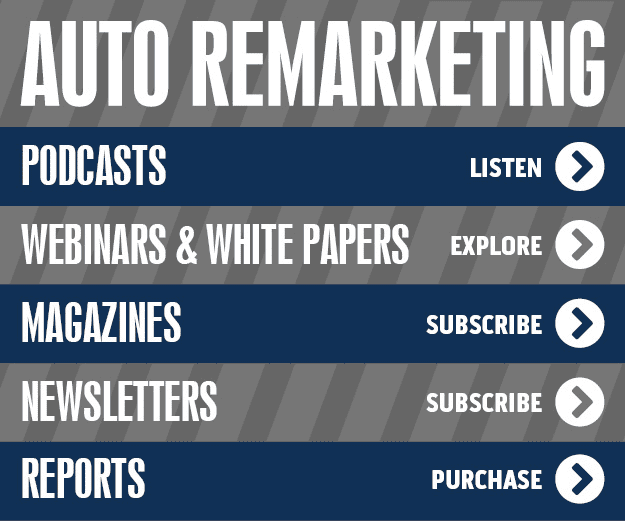Toyota Reaches Out to Consumers in New Technological Campaign

By subscribing, you agree to receive communications from Auto Remarketing and our partners in accordance with our Privacy Policy. We may share your information with select partners and sponsors who may contact you about their products and services. You may unsubscribe at any time.
TORRANCE, Calif. –
Toyota Motor Sales USA believes a new campaign launched on Monday should spark consumer participation since it’s centered on what the company contends it has been doing for many years — repurposing its innovative automotive technology to benefit society in the non-automotive space.
The campaign dubbed “Ideas for Good” is inviting consumers to share their own ideas to improve quality of life beyond the automotive world. Toyota is using this program to challenge consumers to find new, non-automotive applications for five distinct Toyota technologies to ultimately benefit society.
Submissions are being accepted through Feb. 28. The automaker explained that these submissions will be evaluated by independent judges, and the winners of the challenge have the opportunity to bring their ideas to life by participating in a design session.
To inspire innovative new ideas, executives explained that the initiative will be supported by an advertising campaign highlighting the unique ways Toyota technology has been repurposed, or could be repurposed, to improve other areas of life.
The public can learn about Toyota’s technologies and how to share their ideas at www.toyota.com/ideasforgood.
“We’re sharing a side of Toyota that many are not aware of and engaging the public in a way we’ve never done before,” stated Bill Fay, group vice president of marketing for TMS.
Subscribe to Auto Remarketing to stay informed and stay ahead.
By subscribing, you agree to receive communications from Auto Remarketing and our partners in accordance with our Privacy Policy. We may share your information with select partners and sponsors who may contact you about their products and services. You may unsubscribe at any time.
“We’re shining a light on some of our revolutionary technologies, which have been used to improve people’s quality of life, in order to encourage the public to help us identify the next big ‘idea for good,’" Fay continued.
While Toyota contends its innovations inside a vehicle are well known, the company insisted it has developed technologies which transcend that boundary and benefit people in other ways.
For example, the automaker highlighted that Wake Forest University Baptist Medical Center in Winston-Salem, N.C., is utilizing Toyota’s Total Human Model for Safety software to study head injuries sustained by football players.
The company noted THUMS — originally developed to simulate vehicle crash-related injuries — was shared with Wake Forest to allow researchers to model head injuries and study how hits on the football field can affect athletes. Wake Forest researchers hope the THUMS software can help find ways to prevent and treat head injuries, and create even safer football helmets.
Toyota pointed out recent concern with football-related head injuries has further emphasized the importance of this study.
Another example the OEM highlighted came when Yellowstone National Park set out to build a new visitor education center and the design team’s vision was to meet the U.S. Green Building Council’s (USGBC) environmentally responsible Silver Leadership in Energy and Environmental Design (LEED) certification standards.
Toyota said it encouraged the park to set its goal higher after hosting a tour of the Gold LEED campus headquarters in Torrance, Calif. The automaker indicated that it shared its environmental-building insights and technology with the park’s architects and donated $1 million to the Yellowstone Park Foundation, completing the $15 million of private funding needed to start the construction.
In August, officials declared that Yellowstone exceeded the Silver goal, achieving a Gold LEED certification by the USGBC.
Toyota officials highlighted four other instances where its vehicle technology could be repurposed for other uses:
—Hybrid Synergy Drive: HSD can convert braking energy into electricity. The hybrid system can help lower emissions while raising miles per gallon.
—Solar Powered Ventilation System: The Toyota Prius offers this system that can help keep the interior air temperature near the outside ambient temperature when the vehicle is parked in direct sun.
—Touch Tracer Display: An advanced touch-activated display system can allow drivers to control music, temperature and other features from the steering wheel without taking their eyes off the road. The OEM contends Touch Tracer is the first display system in the world to allow steering wheel controls to read out on the instrument panel.
—Advanced Parking Guidance System: Available on the Toyota Prius, this system can utilize ultrasonic sensors in the front and rear bumpers to detect open parking spaces and helps guide the unit into those spaces with only soft driver braking.
To support the “Ideas for Good” initiative, Toyota noted its advertising agency, Saatchi & Saatchi, has created a marketing campaign to further demonstrate the automaker’s commitment toward innovation and continuous improvement.
The campaign utilizes broadcast, print and online mediums. The ads are geared to direct people to an online hub at www.toyota.com/ideasforgood where they can learn more about the OEM’s technologies listed above.
Additionally, consumers can view background information on the panel of experts serving as consumer challenge judges: Dr. Joel Stitzel of Wake Forest University, Keith Grossman of WIRED, Grace Hawthorne of Stanford University Design School, Jake Ward of Popular Science and Josh Morenstein of fuseproject.
“As a leader in quality, Toyota is focused on innovating better cars for a better quality of life," Fay emphasized.
“The campaign inspires new thinking about what Toyota has already been doing for many years,” he went on to say. “Ultimately, with consumers’ help, we hope to inspire new ways that our innovation can benefit society.”


